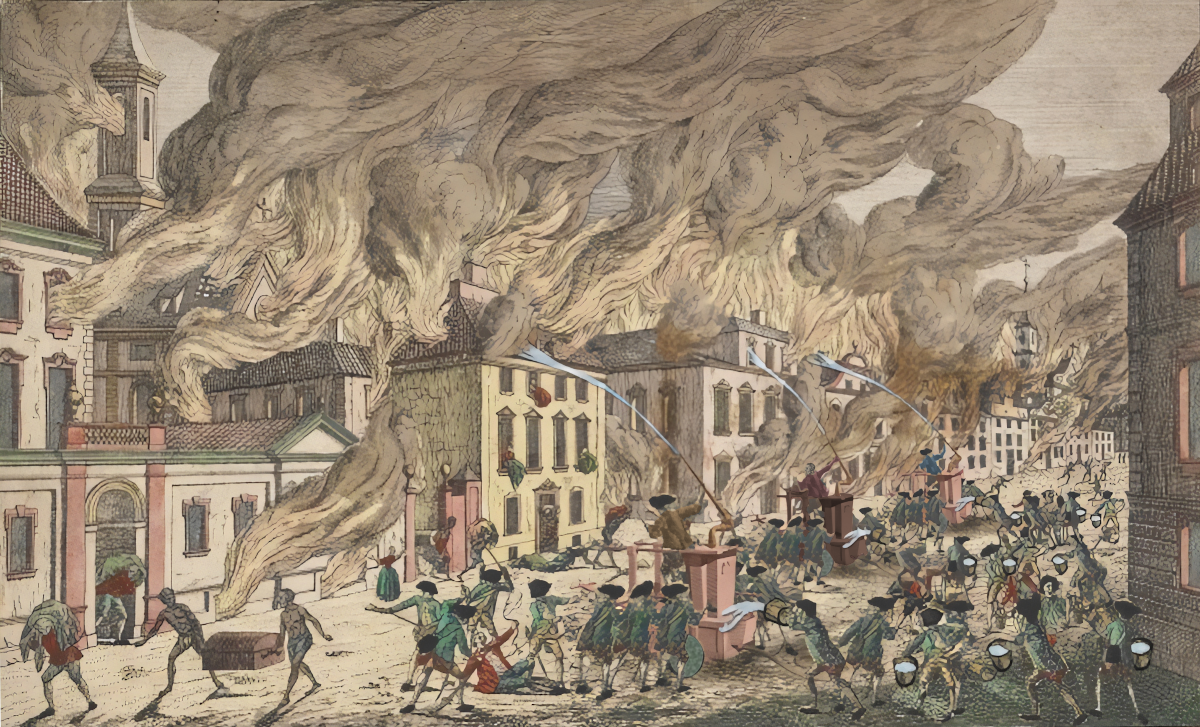Summary


ew York Firefighting & the American Revolution tells the fascinating story of how the heroic people of New York fought fires, saved lives, and protected their homes and livelihoods during the city's first century. The sweeping narrative follows New York from its Dutch roots and the rapid all-colonist response of the bucket brigade, to the introduction of fire engines and the formation of the first few dozen dedicated volunteers "which Persons shall be Called the Firemen of the City of New York".
As early as 1741, the three dozen firefighters of the FDNY began saving New York. In April they battled a series of deliberately set fires, each of which was potentially devastating. The city assumed a conspiracy, a 'Slave Revolt', and responded with arrests, trials, executions, and deportations. Over the next two decades, the fire department and the Watch (crime prevention) grew in step with the town's fear of domestic revenge from the thousands of people enslaved, sometimes cruelly. And, if they needed more incentive, whenever they were at war with the French during these twenty years, which was most of the time, the memory of the French and their Native American allies burning down Schenectady in an earlier colonial conflict further encouraged the expansion of the Watch, more fire fighters, and more engines.
In the years just before the Revolution, firefighters had to quench fires started by the politically motivated Sons of Liberty in addition to the usual apolitical sparks from errant coals. In the 1770s, the tumult of the Revolution rumbled into New York. By that time, the department had expanded to about one hundred seventy firefighters. Although they were exempt from ordinary militia service, none was exempt from the life-altering decisions every New Yorker had to make when the opposing armies descended into the city and the shooting started.
The war did not give firefighters much time to make their decision. Shortly after midnight on September 21, 1776 several fires erupted in lower Manhattan. By daybreak the blazes had consumed five hundred buildings. Decisions made, lines drawn. Some firemen stayed and fought the inferno; others watched their city burn from within Washington's army's lines north of the city. How would the winners of this uncivil war treat those firemen who made, right or wrong, their impolitic decision to remain in the city?
And who was right or wrong to burn the city, if indeed the cause had a "personal touch." The timing of the fires was suspicious. British troops had been in the city for only a few days after forcing George Washington's army north. As the weight of evidence would eventually show, the fires were not accidental. They were premeditated if not planned, deliberate if not organized, designed to disorient if not devastate.
New York Firefighting & the American Revolution has over fifty illustrations with many original maps and models. Of interest to historians and history buffs -
- The first maps to show:
• the original ward structure of the city circa 1700
• the fires of the 'Revolt of 1741'
• the progress of the fire of 1776 street by street
• the Revolutionary fire of 1778 featuring an updated waterline along the East River
- A description with illustrations of New York's first fire engines, inside and out.
- A narrative summary with graphs of noteworthy fires from 1761 to 1783.
- A description of the growth of the FDNY with graph of firemen/engines from 1738 to 1776.
- A view from Wall Street of the west side of Broadway in 1776.
- References to the Saving New York website for additional illustrations, maps, stories, and analyses.

